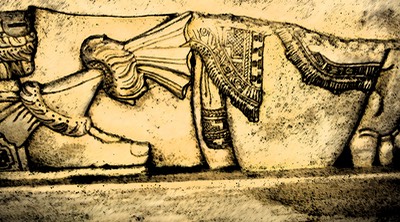The majority of my treatments are given in the client’s home. I use an extremely portable lightweight chair, that can be easily transported. Most treatments last between 75 and 90 minutes, and I charge a flat rate.
*To arrange an appointment please e-mail me by using the contact form in this website.
Initial treatments include a Detailed Consultation. This assists me in understanding any health conditions that might be present in the client, and in developing a Treatment Plan specific to their needs.
Reflexology is a holistic therapy, and takes into consideration the emotional, physical, and mental components present in us all. Despite this, reflexology does not promise to be a “cure all”, nor is it used for diagnostic purposes.
It is always recommended that clients "process" the treatment by drinking a lot of water afterwards. This assists in the treatment and removal of toxins that may have been "dislodged" during treatment.
I am often asked what type of reflexology I practice and teach. In essense, the answer to that question is "classical" reflexology based on the maps of Eunice Ingham and Doreen Bayley. However, over the years I have developed my own style, and am able to infuse other approaches and intuition into my work. Below is a map with many of the major reflex points marked. Every map is different, and each reflexologist will work them differently.
The Feet
The majority of treatments I give, are foot treatments. Working the feet is extremely effective for a number of different reasons. Perhaps most of all, because you are working from our "base" or “ roots", as human beings.
If we were to liken ourselves to trees, then foot reflexology would stimulate those roots which provide nourishment to the rest of the tree - the trunk, branches, and leaves. Every system in the human body is reflected in the reflexes that are located on both the hands and the feet. However, they are most clearly represented on the feet.
There are numerous charts and “maps” of the feet, and although each one is slightly different from the other, the large majority agree on common reflex areas and points.
Below are some charts and interactive maps from The Reflexology Association of Canada, the Association of Reflexologists (British based) and researchers and writers, Kevin and Barbara Kunz. Please click on the latter link to connect to their interactive maps of the hands and the feet.
Below is an interactive map of the reflex points found on the feet produced by the Association of Reflexologists:
The Hands
Although the hands posess the same reflex points and areas as the feet, the reflexologist will generally chose to treat the hands under specific circumstances that suit this work. In my practice, I give hand reflexology treatments when there is an injury on the foot, in emergencies, or situations when an individual cannot readily remove their socks or shoes, as with the elderly and infirm.
In this situation, it is actually more effective to treat the hands than the feet for a number of reasons. Hand reflexology treatments are generally given while facing the client and holding their hands.
Because hand reflexology is “less removed” than foot reflexology from the client’s senses of sight, and sound in particular, it is sometimes a better approach for balancing emotions such as, loss, sadness, or loneliness.
Besides this, hand reflexology is particularly effective for treating upper body and head reflexes, or imbalances in areas such as the sinuses, the brain, and the eyes. Hand reflexology is also extremely effective as a first aid tool - in situations of shock or trauma. Sometimes all it will take is holding the hand, and very gently applying pressurre if possible, to points that the reflexologist determines necessary, to start healing in the individual.
